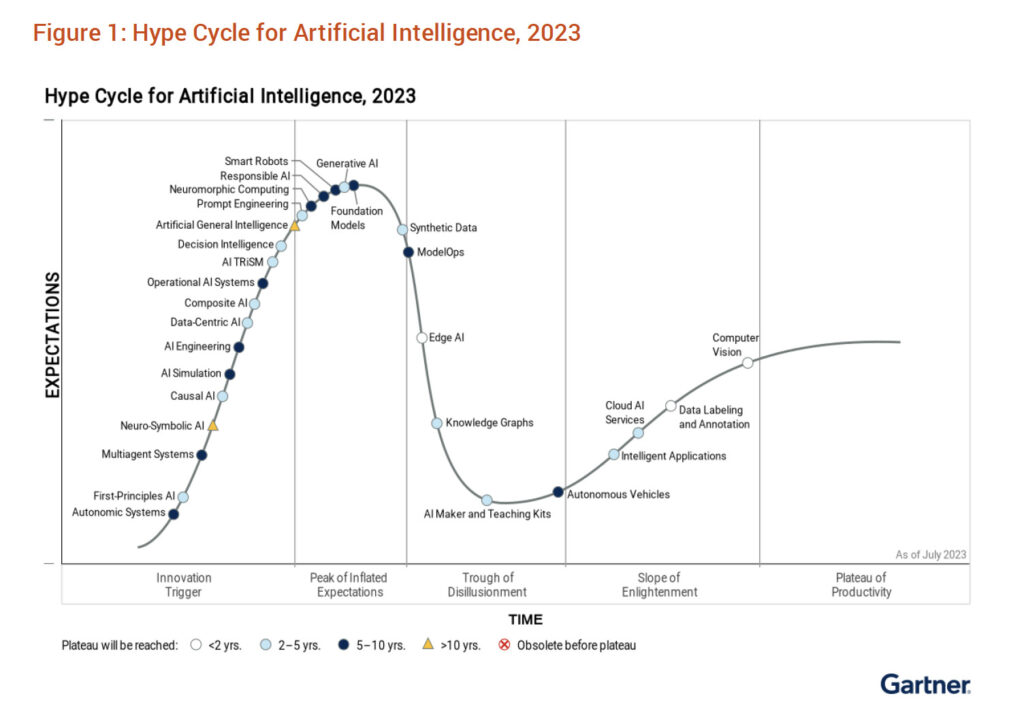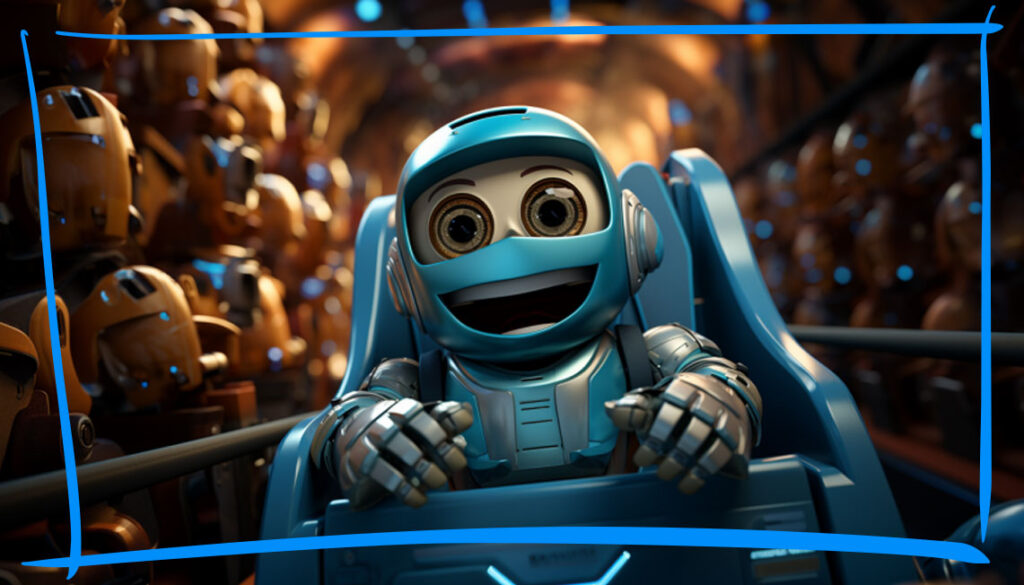The 2023 Hype Cycle for Artificial Intelligence is an extensive dive into the fascinating world of AI. Issued by Gartner earlier this month, the report lays down the technological advancements and the transformative role of AI in shaping industries, businesses, and jobs. With an increased focus on Generative AI and systems like ChatGPT, it has become crucial to understand how these developments are redefining the AI landscape. Let’s take a walk through the report’s highlights and the implications for our workplaces and lives.

Riding the Wave of Generative AI
One cannot ignore the profound impact of Generative AI, which has spurred productivity across organizations. It has fundamentally changed how industries view their business processes and the value of human resources. Today, the capabilities of Generative AI are at the forefront of debates surrounding the safety and ethics of AI and the feasibility of achieving artificial general intelligence.
Generative AI has scaled the Peak of Inflated Expectations on the Hype Cycle, which brings us to an interesting intersection: how does the hyped potential of Generative AI match up to its current real-world applications? A gap still exists, and many of the innovations on the Hype Cycle need to align to transcend limitations and address potential risks.
Two Sides of the Generative AI Coin
As the report highlights, there are two aspects to the Generative AI movement. One side involves the innovations that Generative AI will propel, including Autonomic Systems, AI Engineering, Data-Centric AI, Composite AI, Operational AI Systems, AGI, Prompt Engineering, Smart Robots, and ModelOps.
The other side involves the innovations that will fuel Generative AI’s advancement, like Edge AI, Synthetic Data, Intelligent Applications, Cloud AI Services, Computer Vision, First-Principles AI, Neuro-symbolic AI, Multiagent Systems, Causal AI, AI Simulation, AI TRiSM, Responsible AI, Foundation Models, Knowledge Graphs, and Data Labeling and Annotation.
While it seems like a lot to take in, the takeaway is that Generative AI is both a catalyst for and a beneficiary of various AI-related advancements.
The Impact on Jobs: A Double-Edged Sword?
As fascinating as these advancements may be, it’s natural to wonder: what does all this mean for jobs and careers? If you’ve read any of my other posts, it’s become a topic I think about. A lot.
Firstly, the rise of AI technologies, especially Generative AI, will affect job security for some. The increased productivity and automation it brings could lead organizations to rethink their need for human resources in certain roles. From customer service to coding to graphic design, AI has started to automate many tasks traditionally performed by humans.
But, it’s essential not to view this as a doomsday prophecy for employment. It’s more of a shift. As AI systems take over some roles, they simultaneously create a need for new skill sets. Jobs that didn’t exist a decade ago, like AI Ethics Officers or AI Model Trainers, are becoming increasingly important. Furthermore, the rise of AI might free up humans from repetitive tasks, allowing them to focus more on creative, strategic, and emotionally-engaging work.
A popular adage I’ve been hearing often is, “You won’t lose your job to AI, but you will lose your job to someone who knows AI.”
Looking Ahead: Embracing the AI Revolution
Generative AI is making a splash now, but it’s just the beginning. As per the Gartner report, several high-value innovations will gain mainstream adoption in the next two to five years, with Generative AI and Decision Intelligence leading the charge. Early adoption of these technologies can provide businesses with a significant competitive advantage.
Moreover, some innovations, like Responsible AI and Foundation Models, will likely have a mainstream adoption period of five to ten years. Businesses are encouraged to start small-scale projects with these technologies to gain immediate benefits.
Finally, data and analytics leaders should balance strategic exploration of high-value propositions with those that have been commoditized as stand-alone applications and within packaged business solutions. These include Computer Vision, Knowledge Graphs, Smart Robots, Intelligent Applications, and AI Cloud Services.
Is All of This a Distraction?
On the other side of the coin, Harvard Business Review recently published an article asking if reacting to the AI hype cycle is distracting to companies. In some ways, yes. Every day there is another list of 20 new AI tools that you’re required to know if you want to succeed. Luckily, I’m part of a few online groups who really dig into this, and people like Brian Piper and Karine Abbou, are studying these new things so I can focus on a few things. I’m sure there was a lot of great knowledge shared at MAICON this past week in Cleveland.
The world of AI is evolving rapidly, and the Hype Cycle offers a roadmap for navigating this transformation. As we continue to traverse the path of AI innovation, it’s crucial to remember that these technologies are tools – how we use them, shape them, and respond to them is ultimately a human responsibility.



